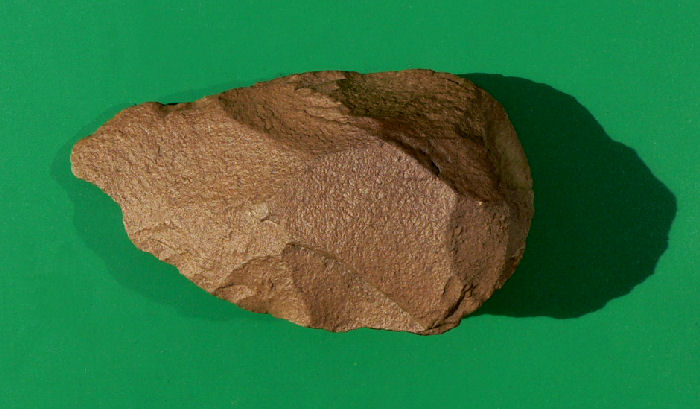
Acheulean Hand Axe - Lower Paleolithic period, 1.5 million to 100,000 B.C.
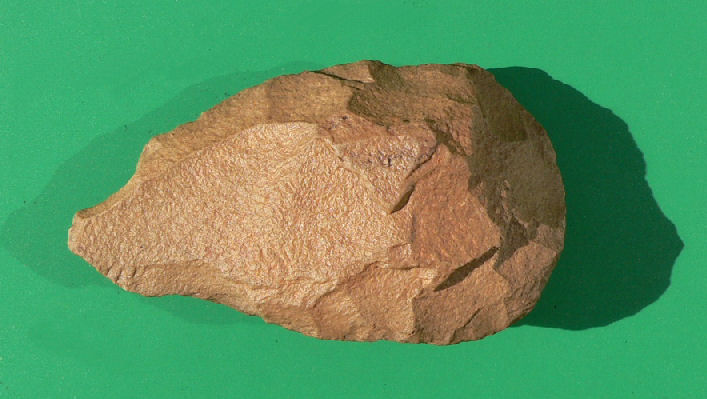


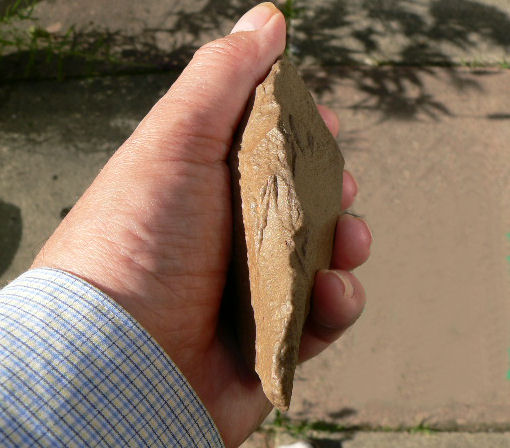
The Acheulean handaxe industry is significant because it marks a conceptual shift in the making of stone tools which could be linked to cognitive development in Homo Erectus and early Homo Sapiens. Earlier stone tools were simple pebble tool technology, where a few random flakes were chipped off of river cobbles to form a sharp edge. The handaxe, however, is a shape within a stone. Its creation required many carefully planned flakes to be removed, which modified the entire stone. Furthermore, it is a symmetrical shape that was regulated and imitated over great distances for over 1 million years. Large or small, the same tear-drop shape was produced. This suggests that a mental template was followed, indicating planning and purpose in the mind of the maker, in addition to sophisticated knapping skills. Some scholars have linked the spread of this template across thousands of miles to an increase in capacity for language and communication in early hominids. Archaeological evidence shows that the tradition of making Acheulean handaxes reached southwestern France, then Britain, approximately 500,000 years ago and continued unchanged for about 300,000 years, thus they are the longest used tool in human history.
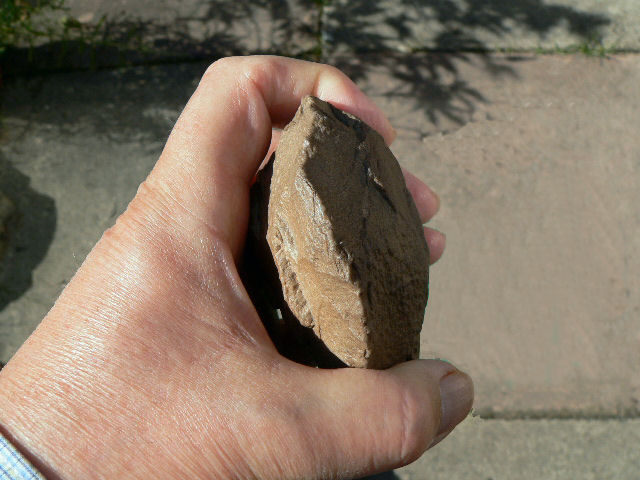
Although it is called a Hand Axe, no one really knows how they were used or what their true purpose was. They have been likened to a multi-purpose Swiss Army Knife, some scholars have even suggested that they were a throwing weapon. The problem is that all have an as yet unexplained sharp cutting edge along the entire perimeter; some specimens are still razor-sharp.
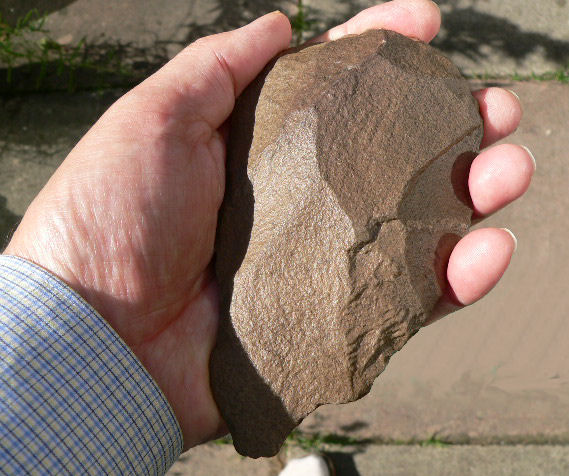
Period: Late Acheulean Stone Tool
Length: 133mm
Max width: 80mm
weight: 425gm (15 ozs)
This superb British/European specimen, appoximately 400,000 years old, was acquired by me on 26 July 2005. 'Acheulian' Britain spanned from about 450,000 to 100,000 years ago